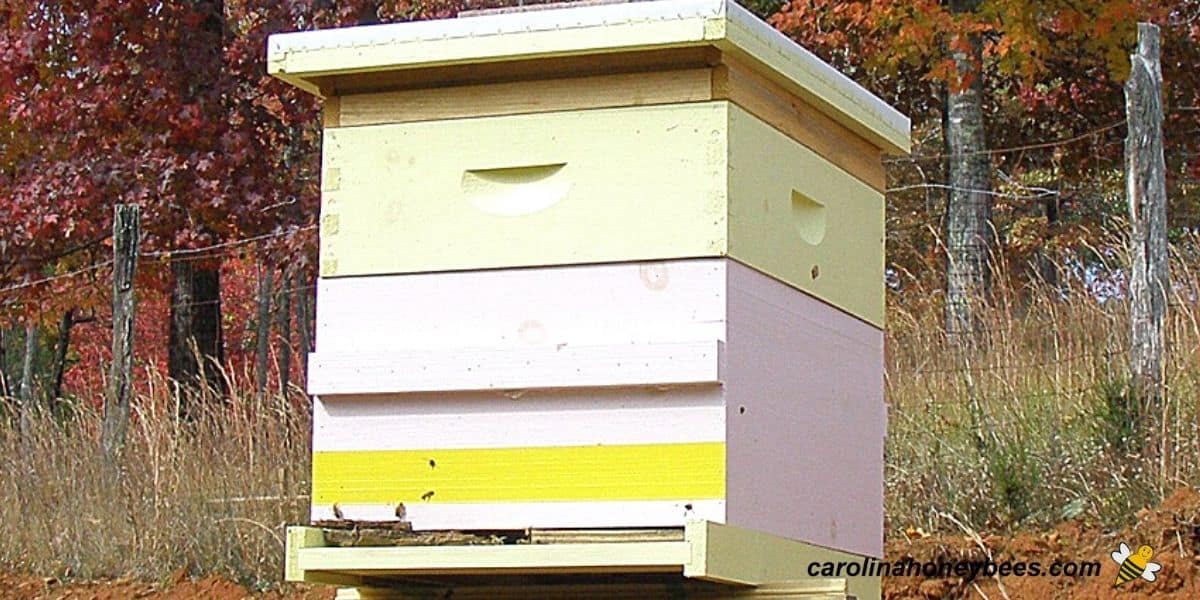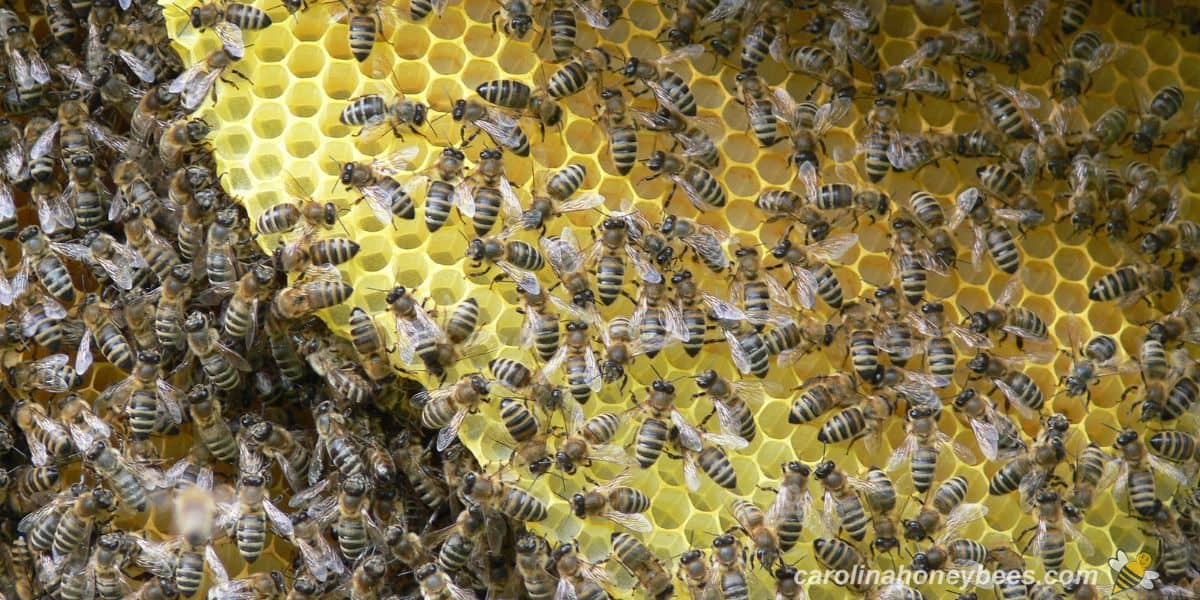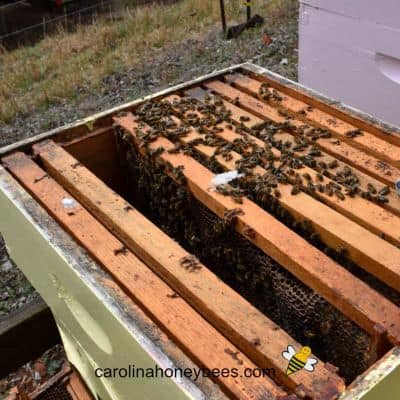Beehive Plans
If you have a desire to build a cozy place for your honey bees – you need to start with some good beehive plans. With basic woodworking know how and good measuring skills, you can construct a hive that your honey bees will enjoy. But, the first step is finding accurate hive blueprints that you understand and can follow with ease.

Why the big deal about building a beehive? There are several reasons to have a correct beehive blueprint and stick to it. But, maybe the most important factor is that if you don’t give the bees what they want – you will have problems down the road.
Significance of Proper Beehive Plans
The magic of modern hive construction lies in the details. In order to give your bees what they want and what you need to manage them effectively, a good beehive plan serves as a road map.
Not unlike the recipe to bake this honey bee cake, correct hive plans give you a list of needed materials and the steps to get the job done.
More importantly, beehive building plans are designed to cater to the needs and desires of honey bees. Give them what they want – and maybe they won’t go away.
These plans also act as a shield against some common mistakes beekeepers make. We sometimes do things that make beekeeping success harder to achieve. Starting off with a proper hive is a first step in the right direction.
Where to Find Reliable Beehive Plans
A plan to build anything is only as good as it is correct. Luckily, there are many places where proper beehive plans can be found – many are free.
- online resources
- beekeeping forums
- local beekeeping associations
- beekeeping books and publications
Common DIY Hive Plans
There are several types of beehives that beekeepers use or like to experiment with. But the two most common are the Langstroth Hive and the Top Bar Hive.
Langstroth Hive Blueprints
The most readily available DIY beehive plans are for construction of Langstroth Hives. Often called a “Lang”, this hive is often considered to be the best choice for someone wondering how to start beekeeping.
Because it is the most commonly used hive, it is easy to find others who can advise you on hive management.
Langstroth hives commonly have 10 removable frames inside each box. But Lang Hives with 8 frames per box are gaining popularity.
A Langstroth hive usually consists of several stacked boxes. The number of boxes needed depends on the climate and needs of the colony.
Free Lang Plans
Langstroth Hive blueprints are fairly easy to follow. The most difficult task is cutting the shelf for the frames to sit.
Be sure to double check those inside langstroth beehive dimensions. Some beekeepers are enjoying horizontal hives that are similar to the original stacked version.
- Langstroth Beehive Construction – Ontario Bees
- 10 Frame Langstroth Plans – Instructables
- Horizontal or Long Langstroth Hive

Building Plans for Top Bar Hives
Ask about one of the simplest beehives to construct, most beekeepers would tell you to choose a Top Bar Hive.
This style was developed in Kenya. It was easy to construct with materials that were readily available. There was no need to order materials or build structures requiring exact measurements.
However, modern Top Bar Hive Plans do have instructions for measurements in their design.
Keep in mind that hive construction is only the first step. Once the bees are inside, you have to manage the colony. Management tasks vary a bit with different type of hives.
Do you have someone in your area who is using the same type of hive? If not and you are a beginner, the Top Bar Hive might be a project for next year.
Free Plans
Here are some free plans for building top bar hives. Some are more detailed than others – find one that fits your needs.
- Build A Top Bar Beehive – Hobby Farms
- DIY Top Bar Hive – Remove & Replace Home Projects
Others Hive Styles
- Plans for Warre Hive – Buzz about Bees
- The Barrel Beehive Plan – Instructables

Bee Boxes that Bees Prefer
In the wild, bees will chose the space that is available. But even then, they are comparing several different types of sites and choosing the best one.
We know that a swarm of bees tends to look for certain specifications in regards to interior space, size of the entrance and height from the ground etc.
When setting up swarm traps we use these same concepts in hope of catching some free bees. A swarm will sometimes surprise us with the choices they make.
When we build and design hives, our goal is to mimic the site that bees are hoping to find. The proper interior size, tight fitting parts that do not let in rain, small entrances easy to guard etc.
If they are not happy with the home you provide, the entire colony of bees may abscond! This is why is it important to make sure your beehive plan matches the bees’ preferences not just your own.
Easier Hive Management for Beekeepers
Modern hives are designed to make hive inspections easier. Being able to remove the frames of wax honeycomb during hive inspections is vital.
Based on years of experience, good hive building plans will have the correct measurements for each part. Of course, mass produced boxes will have some variations. Perhaps you can do better.
When you are selecting a bee hive blueprint, double check the inside measurements. The outside of the hive doesn’t really matter as much as the inside. This is the space your bees build their comb to fit.
Strive to stay inside the industry standard, you may want to other pieces of beekeeping equipment to fit.
A top feeder or additional shallow beehive boxes all work much easier when all of your equipment is standard.

If you choose a bee hive plan that calls for using wood of a certain thickness and you use different lumber – you must adjustment the measurements.
Does it really matter? It will to you. Wooden ware built to the wrong measurements will still work for the bees.
However, the beekeeper will face a constant battle with the bees building comb in undesirable places.
The colony will fill any open space with extra honeycomb or “burr comb”. This makes hive inspections difficult if not impossible.
Homemade Hive Designs
Honestly, you will likely find that it is not less expensive to build rather than purchase one. Unless, you have access to wood at a reduced cost.
But, many folks enjoy the task of constructing wooden hives and like the idea of providing a special handmade item to use in their beekeeping.
Done right it can be a very rewarding feeling to install your bees in your own creation. But, be sure to take the needs of the bees into consideration.
This post may contain affiliate links. As an Amazon Associate, I earn from qualifying purchases. Please read my disclosure.
Final Thoughts
You may have the skill to make a perfect home for your bees. Find a beehive plan that fits your needs and style of keeping bees. Check out several books on building beehives – they are a great reference. And, after you have completed building, learn how to how to paint a beehive for long term protection.

